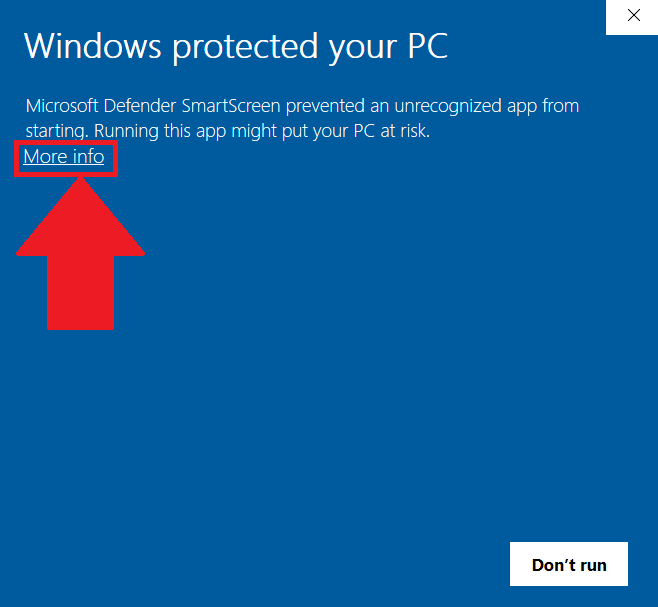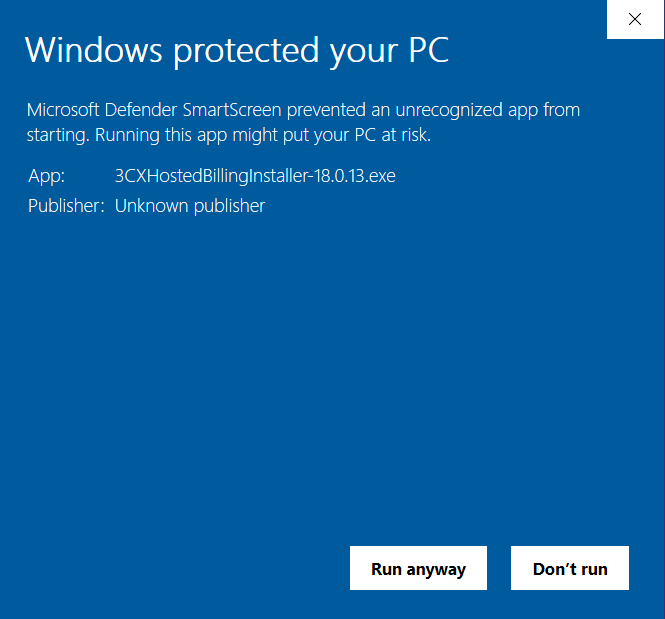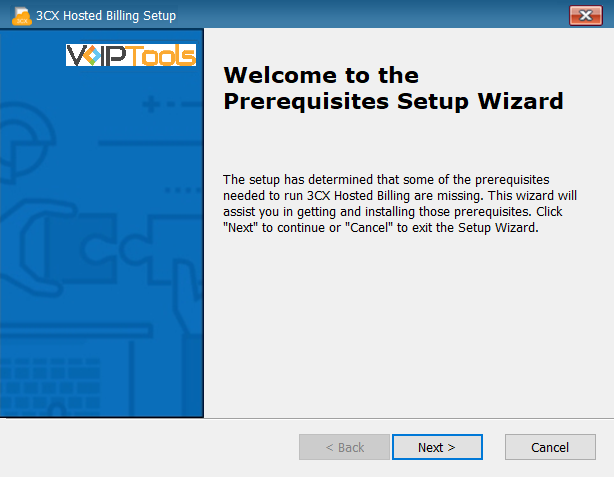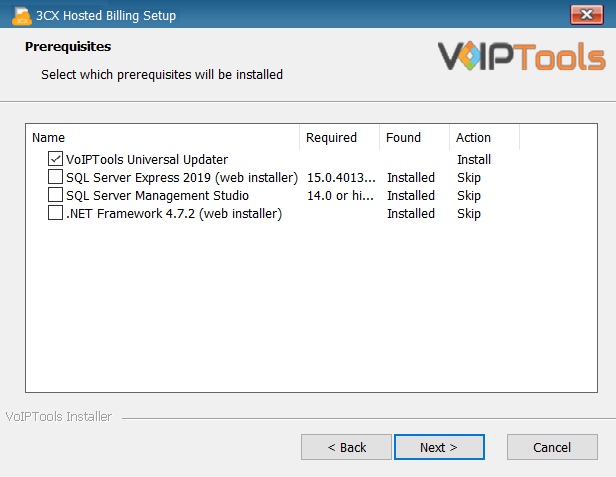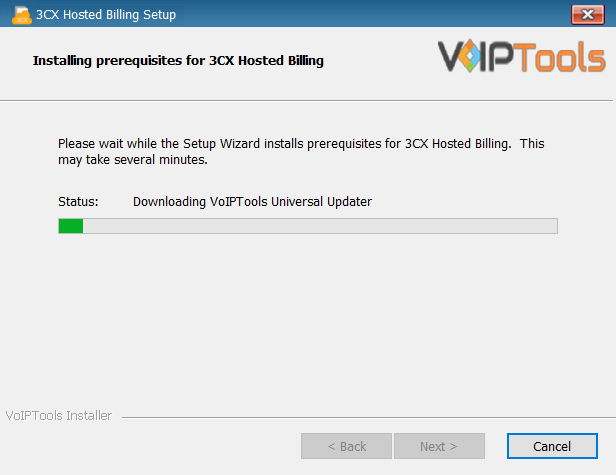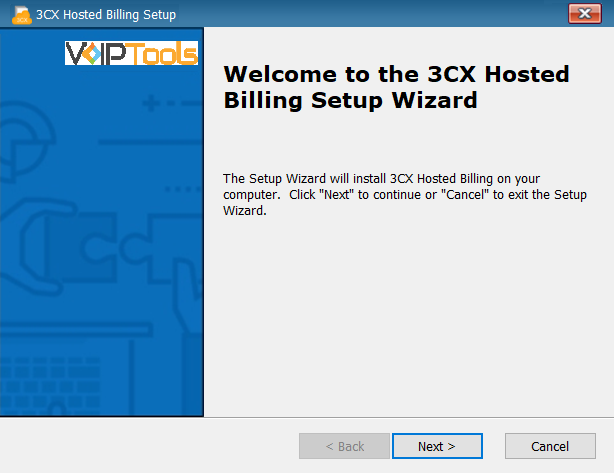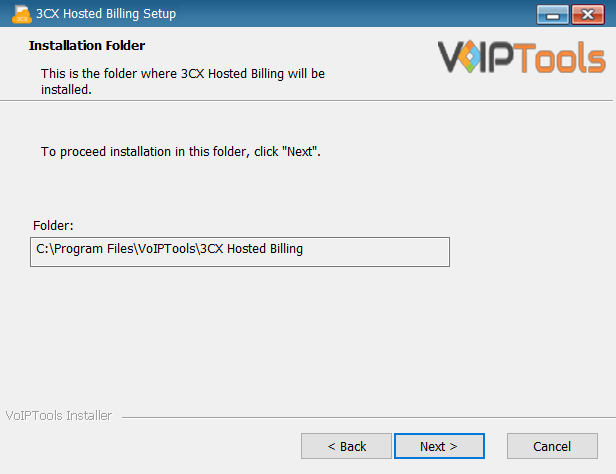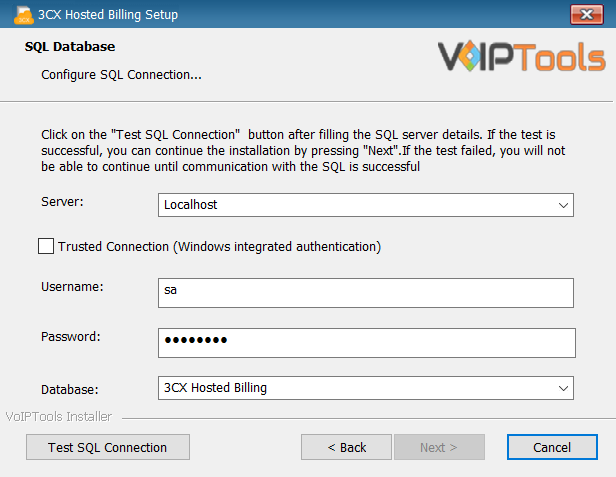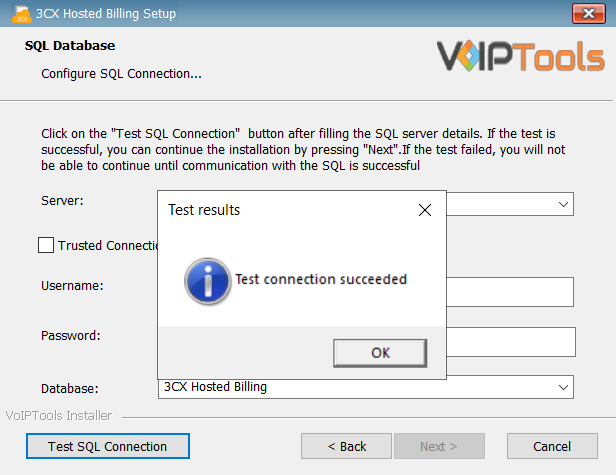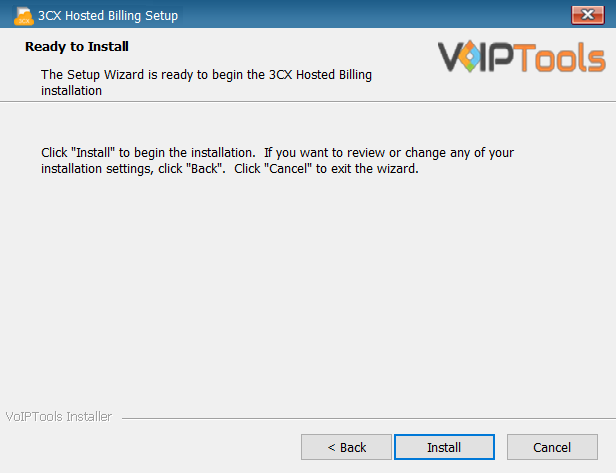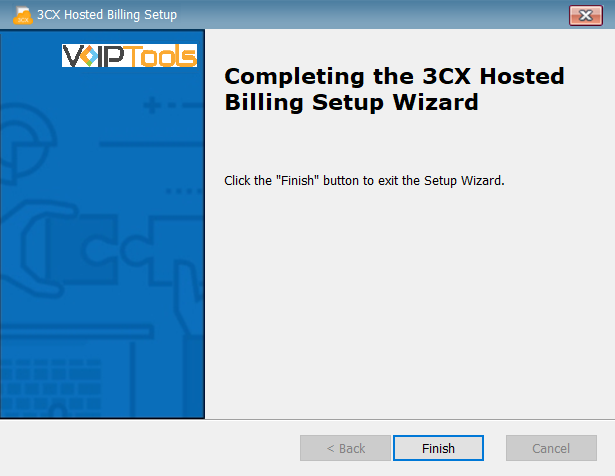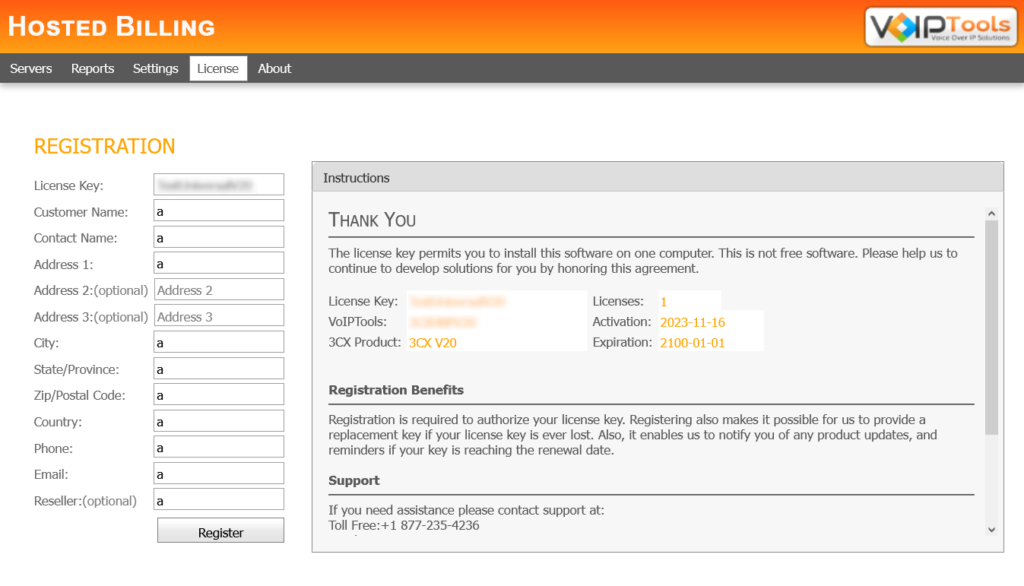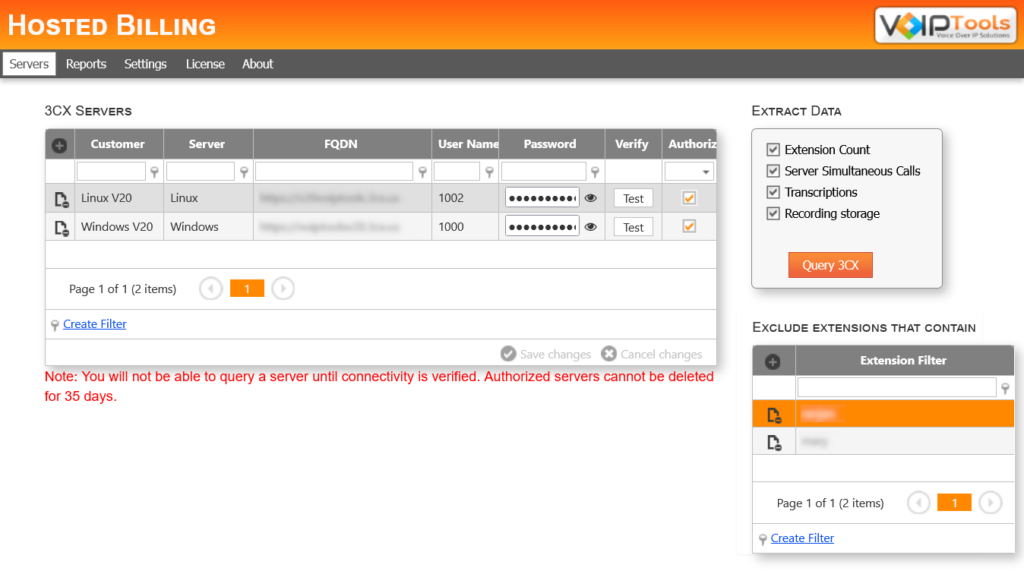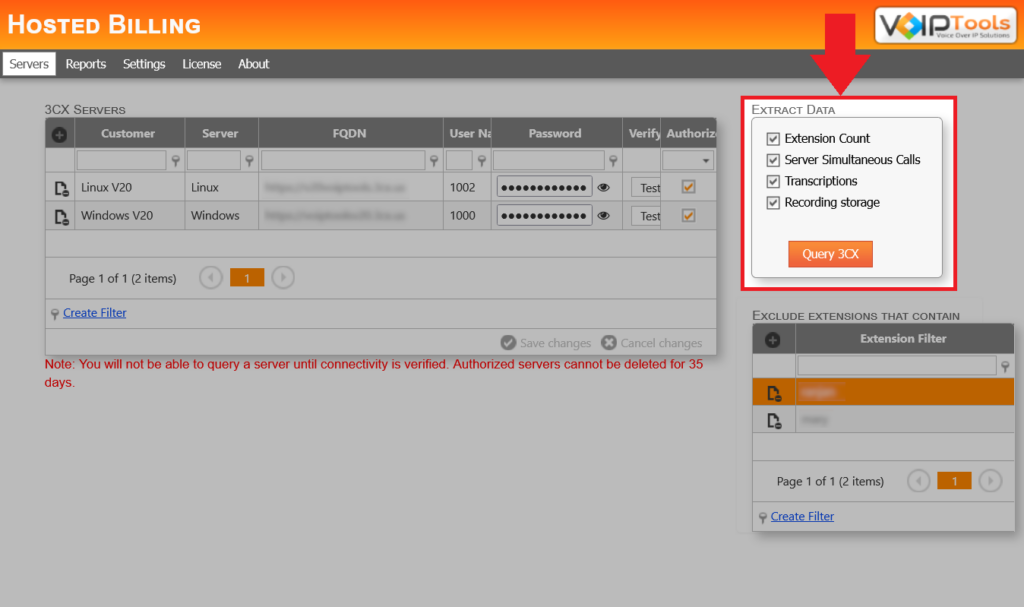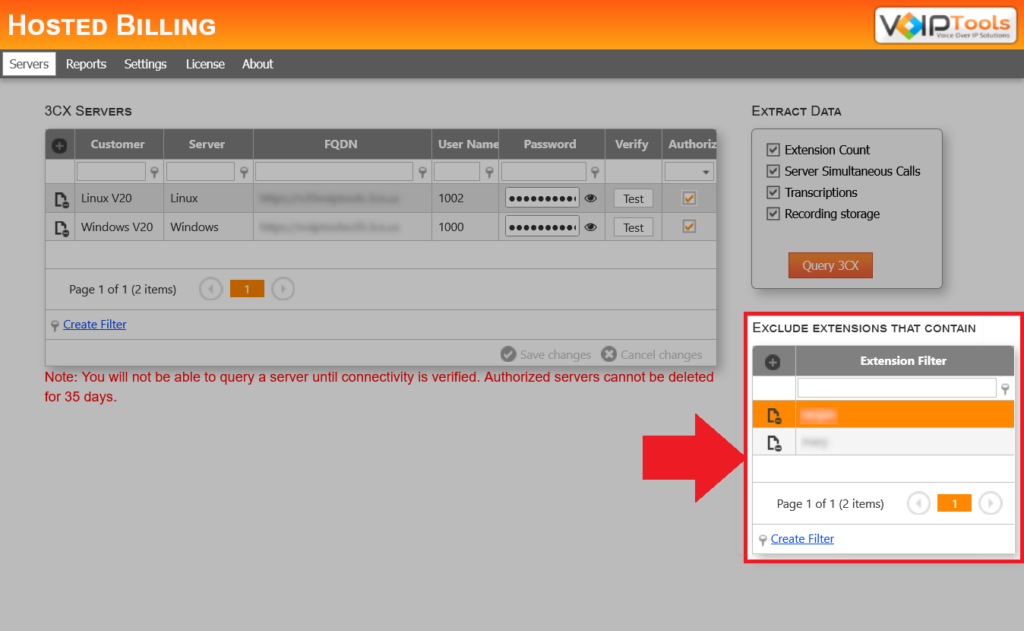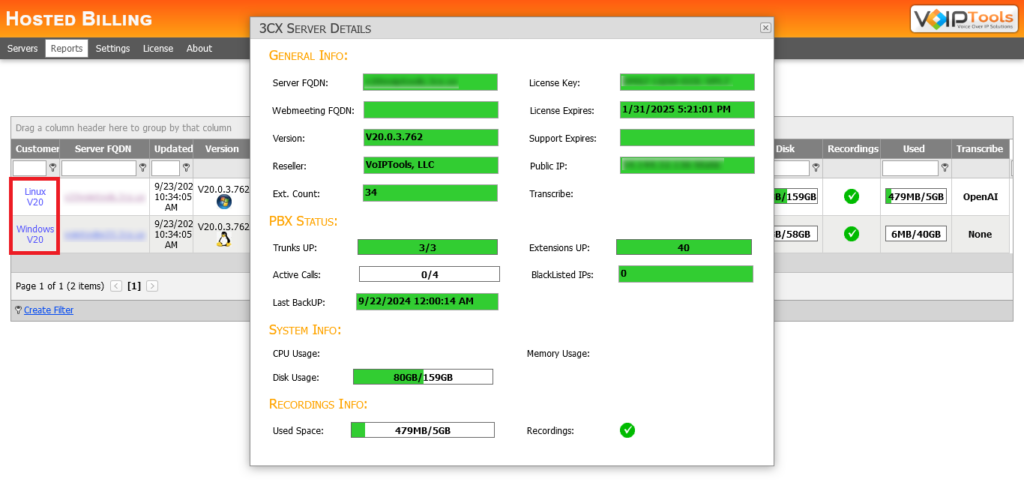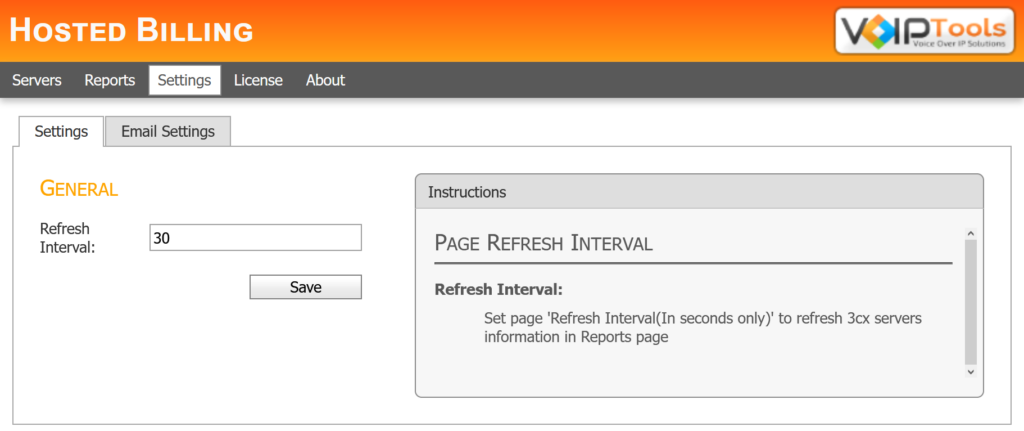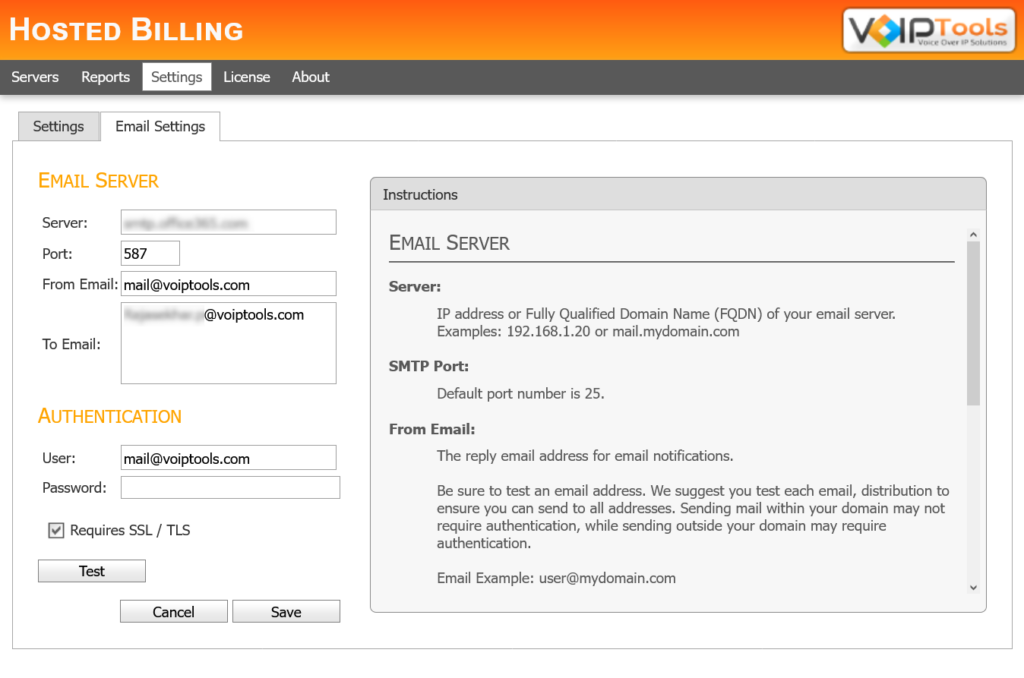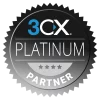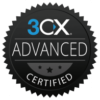Introduction #
Revolutionize Your Web Hosting Business with 3CX Hosted Billing: Say Goodbye to Errors and Boost Profits!
Discover the ideal solution to rescue your web hosting business from costly errors and profit losses caused by manual billing, unclear transactions, and faulty invoices. Introducing 3CX Hosted Billing, an automated interface billing software designed specifically for web-hosting providers. Revolutionize your payment process and streamline your clients’ 3CX-hosted servers effortlessly. With comprehensive reports on extension and simultaneous call counts, as well as the ‘Transcription’ feature status, you can ensure accuracy and bid farewell to billing headaches. Switch to 3CX Hosted Billing now for a seamless payment experience, increased profits, and the full potential of your web hosting business unlocked. Don’t hesitate – elevate your business today!
Why choose 3CX Hosted Billing? #
 | COUNT VALID USER EXTENSIONS | Explore the efficiency of 3CX Hosted Billing in effortlessly tracking and managing extension counts. Uncover the meticulous process of counting extensions, which includes the consideration of unique dummy extensions used for routing or template purposes. |
 | EFFICIENT DISK SPACE MANAGEMENT | Examine the effectiveness of 3CX Hosted Billing in effortlessly monitoring and handling extension numbers. Investigate the detailed process of counting extensions, involving the consideration of distinct dummy extensions utilized for routing or template purposes. |
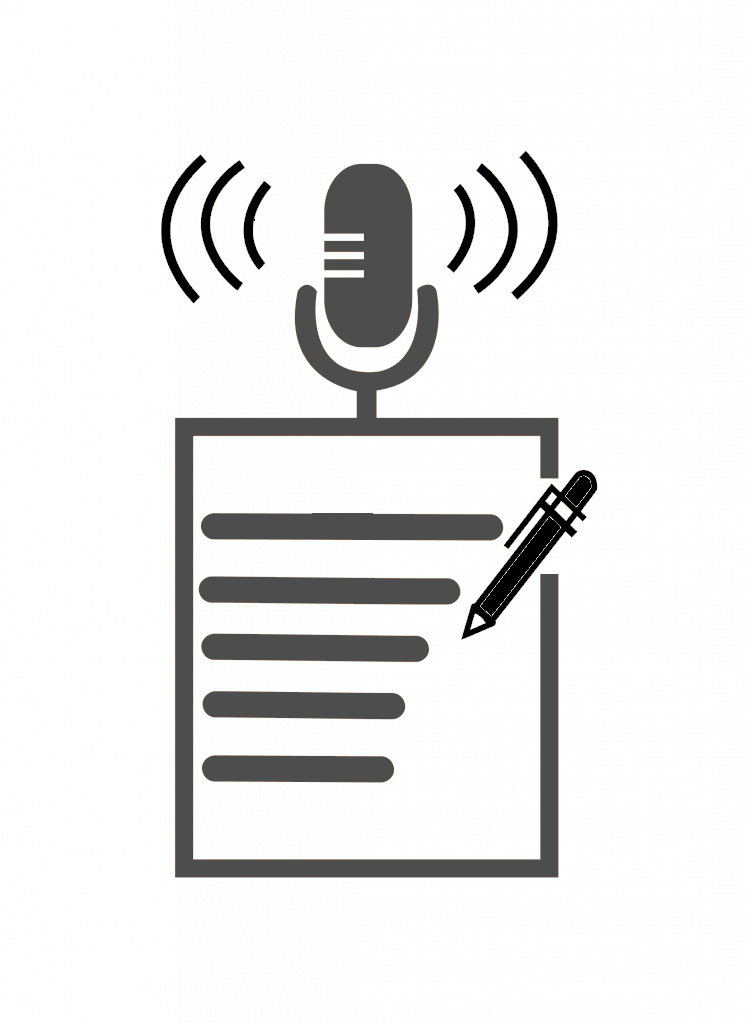 | SIMPLIFIED TRANSCRIPTION BILLING | Efficiently recognize clients through voicemail transcriptions and precisely incorporate these services into your billing process. |
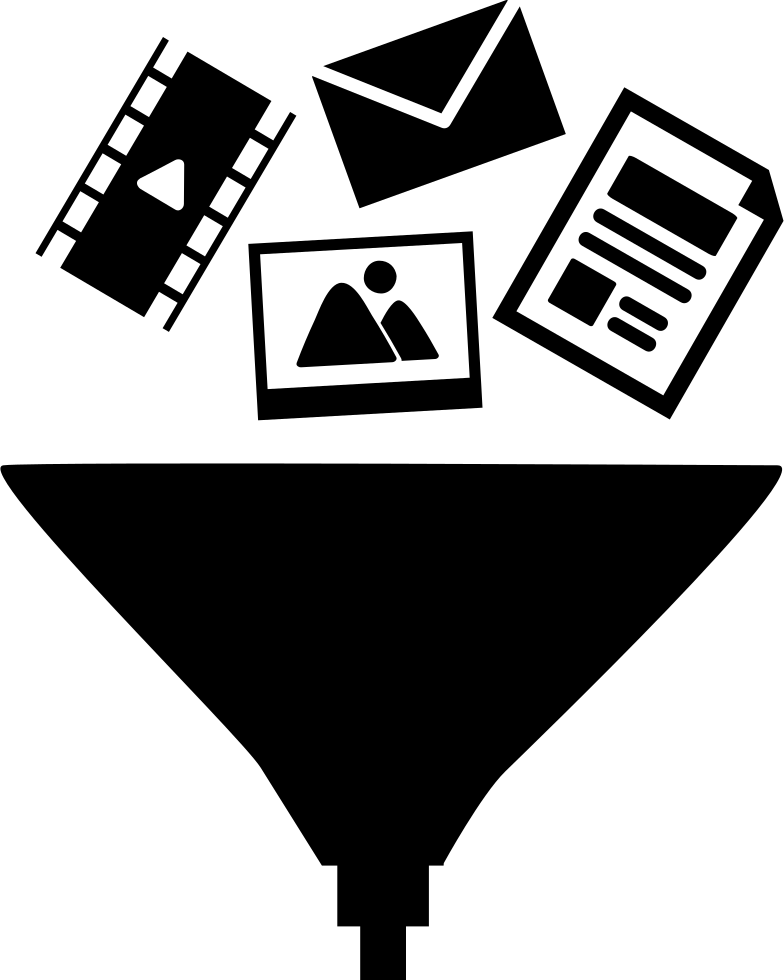 | STREAMLINED DATA COLLECTION | Farewell to monthly manual logins for numerous hosted 3CX servers. We manage data collection, relieving you of time and effort. |
Prerequisites #
Before you begin with the installation steps mentioned in this guide, you need to ensure that your computer meets the minimum requirements mentioned below for installing 3CX Hosted Billing.
- 3CX Version V18 (Professional or Enterprise Version Only)
- Windows 10 or above / Windows Server 2012 or above
- Microsoft SQL Server 2016 or above (Including the free SQL Express edition)
- Microsoft Internet Information Server (IIS) 7.0 or above
- .Net 4.7.2 or above
- Static IP for VoIPTools and 3CX servers
- Port number 7700 opened on your device.
NOTE:
You need a Static IP for both VoIPTools and 3CX servers to ensure proper two-way communication, both the 3CX server (Relay) and the VoIPTools server. Dynamically assigned IP addresses are not supported. Additionally, it is recommended to use HTTPS for secure communication, which requires a FQDN for SSL/TLS certificate validation between the VoIPTools server and the Relay.
NOTE:
While installing SQL Server, ensure the following,
- Uninstall the previous versions of SQL Management Studio manually before installing the new version.
- Install it in “Mixed Mode” to include SQL Authentication, and install SQL Management Studio
NOTE:
- When installing IIS, be sure to install Basic Authentication, .Net Extensibility, and ASP.Net 4.X
Installation overview #
 | DOWNLOAD SOFTWARE | You can order 3CX Hosted Billing online at https://www.voiptools.com. Your order confirmation email will include your license key and a link to download the software. |
 | INSTALL PREREQUISITES | There are a number of prerequisites that must be installed prior to installing the 3CX Hosted Billing. These prerequisites include Microsoft Internet Information Server (IIS) and Microsoft SQL Server |
 | INSTALL 3CX-HOSTED BILLING | This User Guide contains step-by-step instructions to successfully install 3CX Hosted Billing. Begin by extracting the installer from the downloaded zip file (Step 1 above), then run the setup program named HostedBilling.exe |
 | REGISTER YOUR SOFTWARE | You must register your license key to activate 3CX Hosted Billing. Your license key is included in your order confirmation email, and can also be found in your order history on our website. |
Step By Step Installation Procedure #
The following section guides you through a detailed walk-through of the installation process:
Step 1: Download 3CX Hosted Billing #
- Find the software download link in the Order Confirmation Email, or you can find it in your order history on our website and download the 3CX Hosted Billing application.
- In the Microsoft Defender SmartScreen, click the More Info option.
- Click the Run Anyway option to start the installation.
Step 2: Install Prerequisites #
Click on the software installer that was downloaded in step 1 above. The installation wizard will automatically identify the needed prerequisites and assist you with the install of the prerequisites needed to run ‘3CX Hosted Billing’. These include .NET Framework (Web Installer), SQL Server Express (Web Installer) and, SQL Server Management Studio.
- Click the downloaded installer executable to launch the Prerequisites Setup Wizard and click Next.
- In the Prerequisites window, the installer will identify the missing prerequisites. It is important that you install all the required prerequisites. However, you can select/unselect the applications to be installed based on your unique requirements. Click Next to continue.
The installer will download and install the selected applications.
/
- Click Yes in the Confirmation Message Box to reboot the computer.
Figure 6: Reboot confirmation message box
Step 3: Start the installation process #
- After all the prerequisites are installed, the 3CX Hosted Billing Setup Wizard appears. Click Next to Continue.
- On the Select Installation Folder window, the Folder field displays the location where the ‘3CX Hosted Billing’ will be installed. Note that you cannot change the path.
- Click Next to continue.
Step 4: Configure the database #
When configuring 3CX Hosted Billing, select an existing Microsoft SQL Server instance in your environment. The database server can be a remote SQL Server, or a local instance running on the VoIPTools server.
- On the SQL Database window, in the Server field, select the desired instance of SQL Server.
NOTE:
We encourage you to use SQL Authentication rather than Windows authentication. Many of our tools leverage a Call Flow Designer (CFD) application running on the 3CX. Frequently our CFD applications require access to a SQL database. If the 3CX server and the database server are not in an Active Directory domain, Windows authentication will fail. To use SQL authentication, your SQL Server must be configured to run in “Mixed Mode”. If you installed SQL Server with one of our tools, we configure SQL in “Mixed Mode”.
- To use SQL Authentication, be sure to uncheck the Trusted Connection checkbox.
- In the Username and Password fields, enter valid SQL login account credentials
- To use Windows Integrated Authentication (not recommended), check the Trusted Connection (Windows integrated authentication) checkbox.
- In the Database field, the installer will automatically display the default database name. We encourage you to use the default name. If you are upgrading or reinstalling 3CX Hosted Billing, select the existing database name from the list.
- Click the Test SQL Connection button to confirm connectivity to SQL Server and then click Next to continue.
Step 5: Installing 3CX Hosted Billing #
- In the Ready to Install window, click Install to start the installation of the ‘3CX Hosted Billing’.
The application installation progresses.
- Once the installation is complete, check Launch 3CX Hosted Billing check box and then click Finish. The 3CX Hosted Billing configuration screen opens. If you want to simply close the installer without opening the configuration screen, then simply uncheck Launch 3CX Hosted Billing check box and then click Finish.
Step 7: Register your Software #
- Click the Hosted Billing desktop icon
 to open the Hosted Billing web application.
to open the Hosted Billing web application. - On the top menu, click the License tab.
- Enter your registration information in all the fields (Note that the red dot denotes a required field).
- Click Register to complete the software registration.
Web Portal #
To access the ‘3CX Hosted Billing’ web portal, click on the desktop icon that was created during the installation process (3CX Hosted Billing Web). The web application has the following screens,
- Servers screen
- Reports screen
- Settings screen
- License screen
- About Screen
Servers #
The Servers screen enables you to add multiple FQDN servers, query 3CX to know count of extensions and server simultaneous calls, know if ‘Transcription’ feature is enabled or not, and apply extension filter to know the count of test extensions. You can also filter the search results to identify the desired FQDN server or extension filter. The Reports screen displays data as per the settings configured in Servers screen.
Extract the data #
- In the Extract Data box, check the following checkboxes as per your requirement so that the report will display data accordingly;
| Extension Count | To know the extension count in each of the FQDN servers. |
| Server Simultaneous Count | To know the simultaneous call count in each of the FQDN servers. |
| Transcriptions | To know if the ‘Transcription’ feature is enabled or not in each of the FQDN servers. |
| Recordings | To know the total used space for recordings and if the recordings quota is reached or not. |
- Click the Query 3CX button.
NOTE:
If you uncheck a specific checkbox, then the respective column will not display in the report results.
Create extension filters #
You can add one or more FQDNs of all the servers that you want to include in the report. To add/delete new or existing FQDN, follow the instructions below:
- To add new FQDN, in the 3CX Servers box, click the Add
 button.
button.
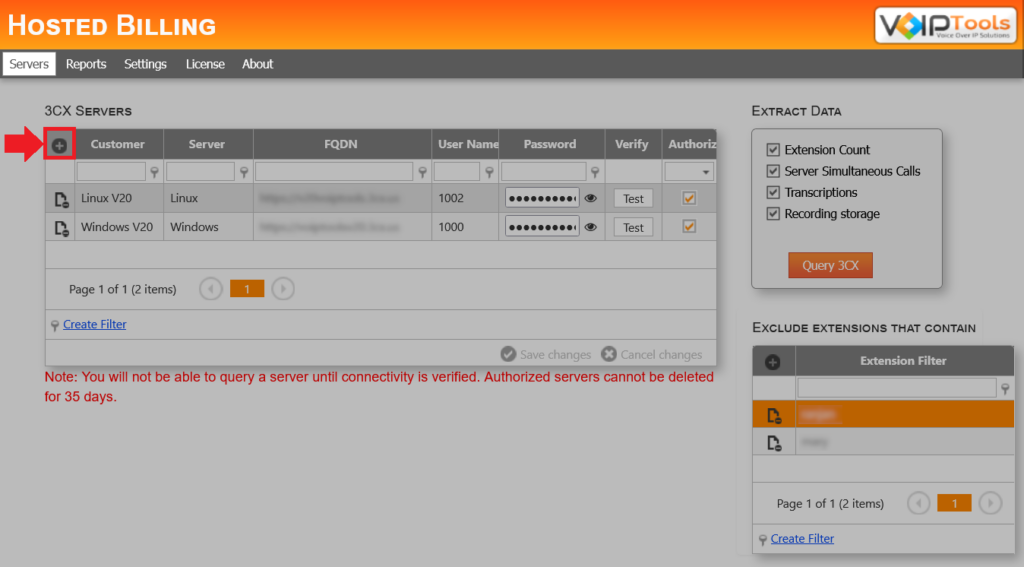
- In the Customer field, enter the customer name.
- In the Server Name field, enter the server name.
- In the FQDN field, enter the 3CX Console Management login URL.
- In the Username and Password fields, enter the 3CX Console Management username and password for respective FQDN.
- If you have entered valid credentials, then the data will be saved in Servers tab else, an error message will display.
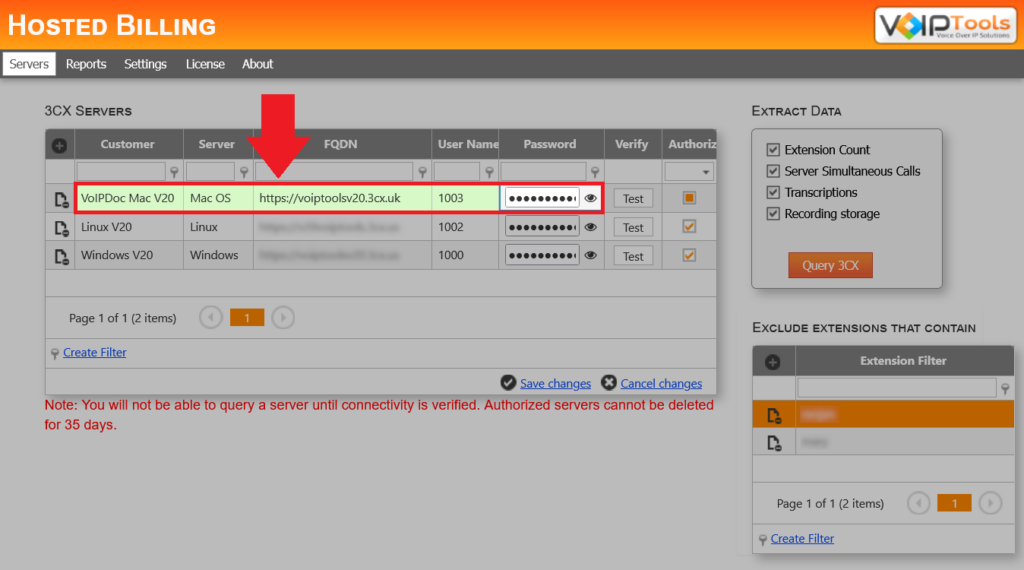
- Once the application validates the credentials, click Test button so that the application re-validates if the credentials remain the same as those that were added last time. If the data is valid then the application automatically checks the Autorized checkbox for the respective FQDN else, the re-validation fails and the respective Authorized checkbox remains unchecked.
- Click Save Changes.
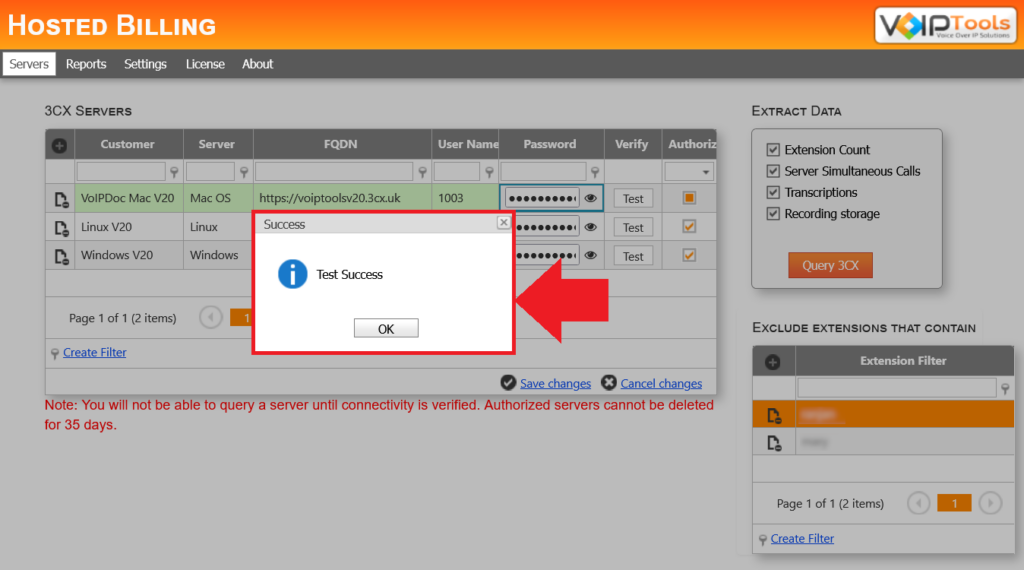
NOTE:
You will not be able to query a server until connectivity is verified. Authorized servers cannot be deleted for 35 days.
Filter the extensions #
You can add one or more extension filters and add the desired filter that you want to include in the report.
- To add an extension filter, in the Exclude Extensions That Contain box, click Add button.
- In the Extension filter field, enter the text so that the extensions with the respective name will not be counted in the report data.
- To delete the extension filter, select the desired extension filter that you want to delete and then click the Delete button beside the respective extension filter and click Save Changes.
Reports #
The Reports screen displays report data as per the scheduled 3CX queries, FQDNs and extension filter applied in the Billing Host screen. From here, you can export data in various formats, view server details for the desired customer and, group column name and display report.

| SERVER FQDN | 3CX Server FQDN. |
|---|---|
| WEBMEETING FQDN | 3CX Webmeeting FQDN |
| VERSION | 3CX Version |
| RESELLER | Name of the reseller |
| EXT. COUNT | Total extension count for respective customer |
| LICENSE KEY | License Key of 3CX Server. |
| LICENSE EXPIRES | License expiry date & time. |
| SUPPORT EXPIRES | Support expiry date & time. |
| PUBLIC IP | Public IP of the 3CX Server. |
| TRANSCRIBE | If transcription feature for the respective FQDN is enabled or disabled. |
| TRUNKS UP | No. of trunks currently registered. |
| EXTENSION UP | No. of extensions currently registered. |
| ACTIVE CALLS | No. of active calls. |
| BLACKLISTED IPS | Count of blacklisted IPs for the respective FQDN |
| LAST BACKUP | Last backup date & time. |
| CPU USAGE | % of CPU utilization |
| MEMORY USAGE | % of memory utilization |
| DISK USAGE | Disk space utilization. |
| USED | Total used space from 3CX Phone System for respective FQDN and the Maximum recording storage space (storage limit). |
| RECORDINGS | If the storage has not yet crossed the recording quota (recordings will not be stopped) or crossed recording quota (recordings will be stopped). |
Export Report #
To export report data into desired file format, click on the desired export button and then browse the path where you want to save the file.
View Server Details #
To view the server details associated to a specific customer, simply click on the respective customer name. 3CX Server Details popup appears.

| SERVER FQDN | 3CX Server FQDN. |
|---|---|
| WEBMEETING FQDN | 3CX Webmeeting FQDN |
| VERSION | 3CX Version |
| RESELLER | Name of the reseller |
| EXT. COUNT | Total extension count for respective customer |
| LICENSE KEY | License Key of 3CX Server. |
| LICENSE EXPIRES | License expiry date & time. |
| SUPPORT EXPIRES | Support expiry date & time. |
| PUBLIC IP | Public IP of the 3CX Server. |
| TRANSCRIBE | If the transcription feature for the respective FQDN is enabled or disabled. |
| TRUNKS UP | No. of trunks currently registered. |
| EXTENSION UP | No. of extensions currently registered. |
| ACTIVE CALLS | No. of active calls. |
| BLACKLISTED IPS | Count of blacklisted IPs for the respective FQDN |
| LAST BACKUP | Last backup date & time. |
| CPU USAGE | % of CPU utilization |
| MEMORY USAGE | % of memory utilization |
| DISK USAGE | Disk space utilization. |
| USED | Total used space from 3CX Phone System for respective FQDN and the Maximum recording storage space (storage limit). |
| RECORDINGS | If the storage has not yet crossed the recording quota (recordings will not be stopped) or crossed recording quota (recordings will be stopped). |
Group Columns #
The Group by Columns feature in the Reports tab lets you organize data efficiently, enabling quick insights by collapsing or expanding grouped columns as needed.
- In the column header, point to the column header using which you want to group by and display the report, and then drag the column to the space above the column header.
- Click the Expand
 button to expand the tabs and view the data.
button to expand the tabs and view the data.
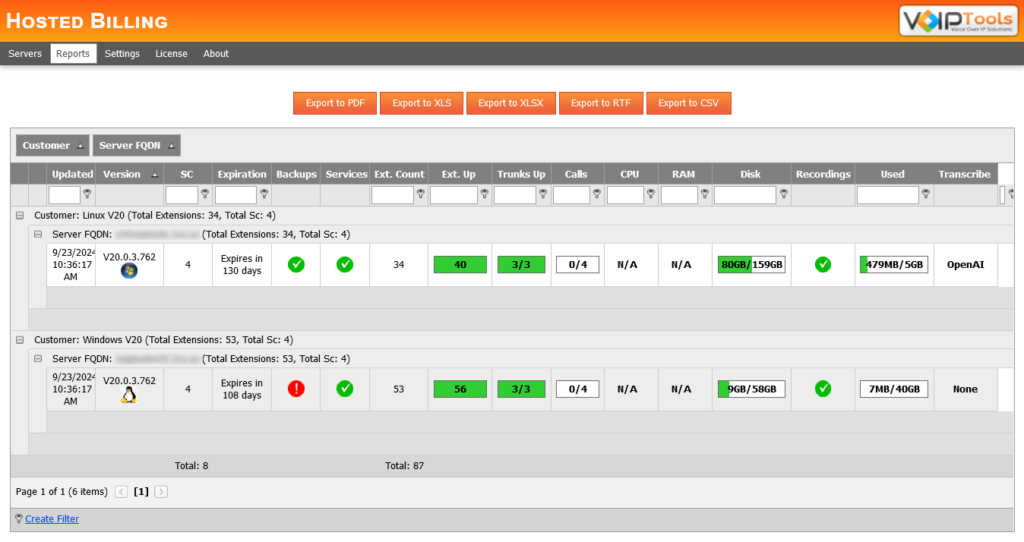
Settings #
The ‘Settings’ screen enables you to configure refresh rate for refreshing 3CX Servers information and also configure specific mail ids to get notified whenever the CPU and RAM reaches the threshold level.
General Settings #
The ‘Settings’ screen enables you to set page ‘Refresh Interval (in seconds only)’ to refresh 3CX servers information in ‘Reports’ page.
- In the Settings page, click Settings tab.
- Under General and in the Refresh Interval field, enter the time in seconds so that the 3CX servers information will refresh for every specified interval in the Reports page.
- Click Save.
Email Settings #
The ‘Email Settings’ enable you to configure specific email ids which you want to notify whenever the CPU and RAM capacity reaches the threshold level of 90%.
- In the Settings page, click Email Settings tab.
- Under Email Server:
- In the Server field, enter the IP address or Fully Qualified Domain Name (FQDN) of your email server.
- Examples: 192.168.1.20 or mail.mydomain.com
- In the Port field, enter SMTP Port number. Default port number is 25.
- In the From Email field, enter the reply email address for email notifications of CPU and RAM if reached threshold levels.
- In the To Email field, enter the desired email addresses (separated by comma) to which you want to notify whenever the CPU and RAM capacity reaches to a threshold level of 90%.
- In the Server field, enter the IP address or Fully Qualified Domain Name (FQDN) of your email server.
- Under Authentication:
- Enter valid credentials in Username and Password fields.
- Check Requires SSL/ TLS check box if your mail server requires a secure connection – Secure Socket Layer (SSL) or Transport Layer Security (TLS) to relay email. Gmail, Google Apps and Microsoft 365 require a secure connection.
- Click Test button to test if Email Server is able to communicate with 3CX Phone System.
- Click Save to save the data.
Need Support? #
You get quick answers to most of your inquiries in our online manual. If you prefer direct contact, we offer various support channels, including phone, email, live chat, and our helpful VoIPTools forums.
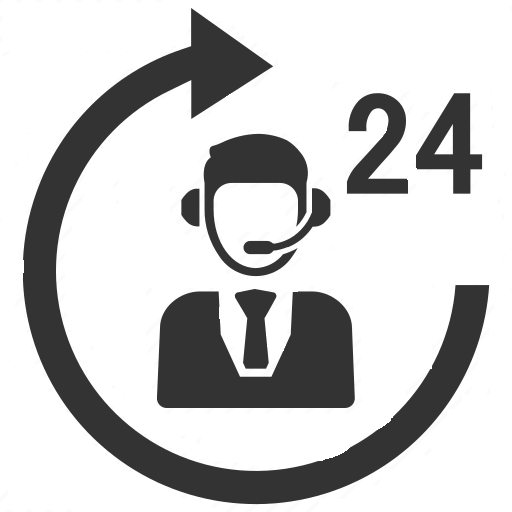
24/7 Support Availability #
Rest assured, our dedicated team is here to assist you around the clock, every day of the year. Whether you’re based in the USA or India, we’re ready to provide prompt responses to your technical queries.
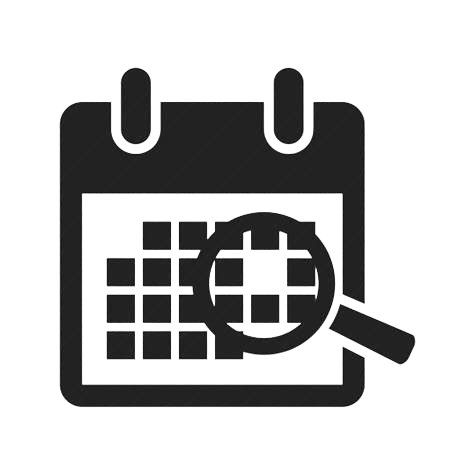
Windows Event Log for VoIPTools Applications and Services #
For troubleshooting any application errors, our Windows Event Log contains a comprehensive list of error messages, warnings, and informative notes related to all our VoIPTools applications and services. It’s a valuable resource to help you pinpoint and resolve any issues you may encounter.

Join Our Forum Community #
Are you looking to collaborate with other VoIPTools customers facing similar challenges? Our forum is the perfect platform to exchange ideas, solutions, and best practices. Join the conversation at: https://www.voiptools.com/community/

Real-Time Live Chat Assistance #
Got questions that need immediate answers? Our chat support team is available to assist you in real time. Just click on the Live Chat button located at the lower right corner of our website, and we’ll acknowledge your queries right away.

Efficient Email Support #
To ensure a thorough understanding of your concerns, email us at support@voiptools.com. Describe your issue in detail, and we’ll get back to you within one business day with the support you need.
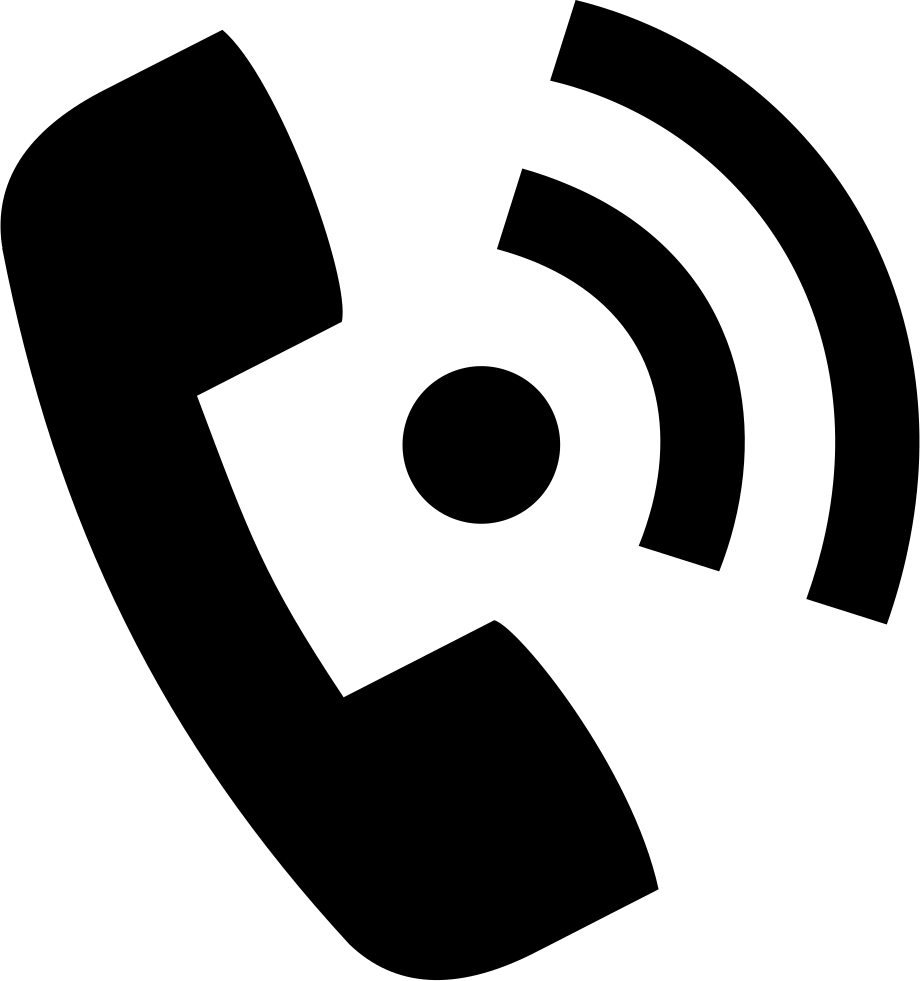
Reach Us by Phone #
If you prefer to speak with a representative directly, you can reach us at +1 801-642-4655. Our attentive team is available to take your calls from 8:00 AM to 6:00 PM (Central Standard Time).
Comprehensive support services: #

Free Support #
If you’ve purchased our products through a VoIPTools Partner, rest assured that they provide first-level support at no additional cost. Partners have access to 100% free technical assistance and actively participate in the troubleshooting process.
VoIPTools customers enjoy access to our online manuals and receive support through emails (with responses within one business day) and live chat. However, please note that we do not provide remote server login assistance.

Paid Support #
For a more hands-on experience, consider our “Installation Support” package. Our expert support team can log in to your servers, and install and configure all our tools. This comprehensive service includes setting up SQL Server Express and Internet Information Server if necessary. We’ll work closely with you to tailor our applications to meet your requirements.
We’re committed to providing top-notch support to ensure your VoIPTools experience is smooth and hassle-free. Contact us today, and let us assist you in making the most of our powerful tools!
